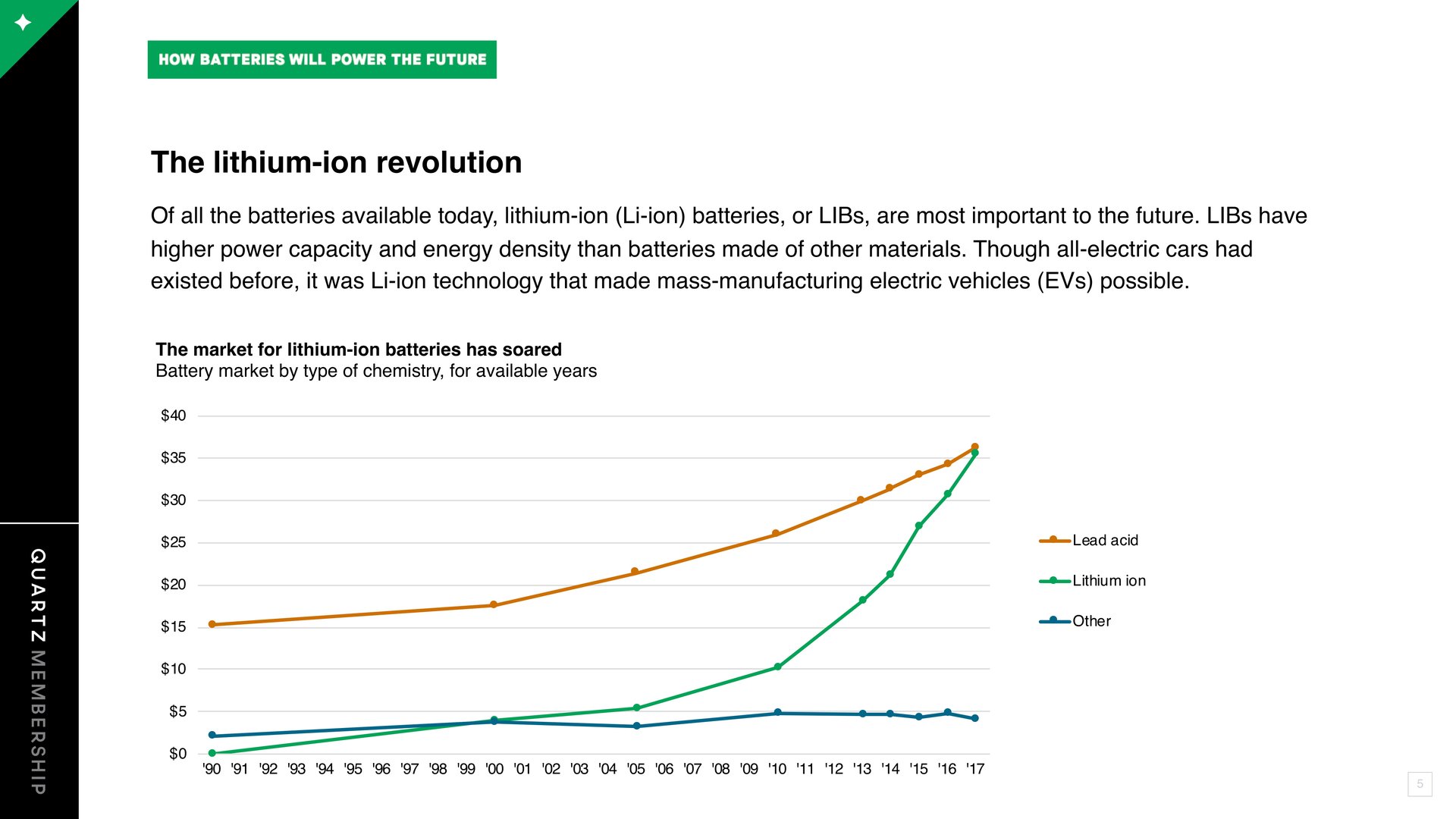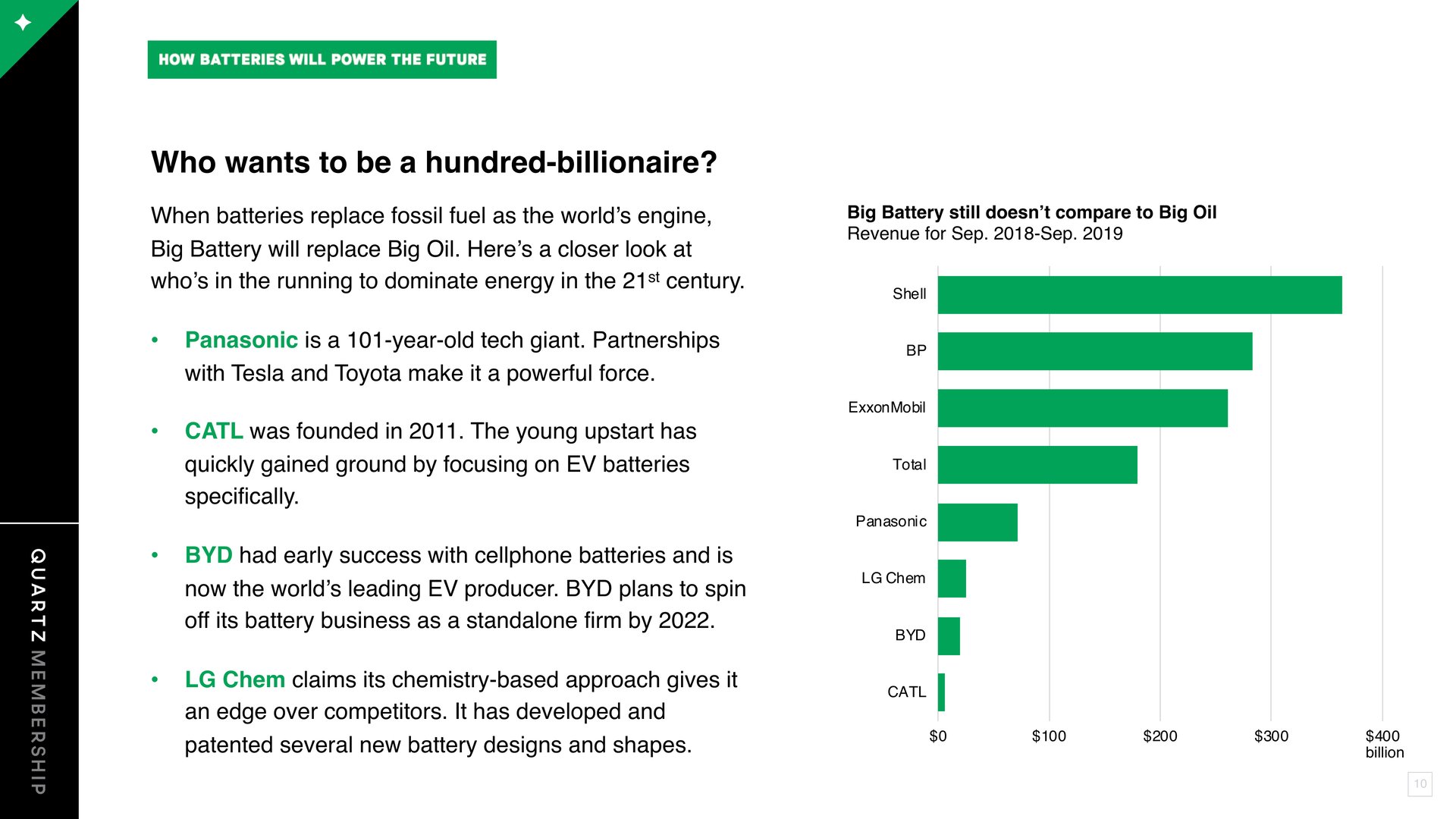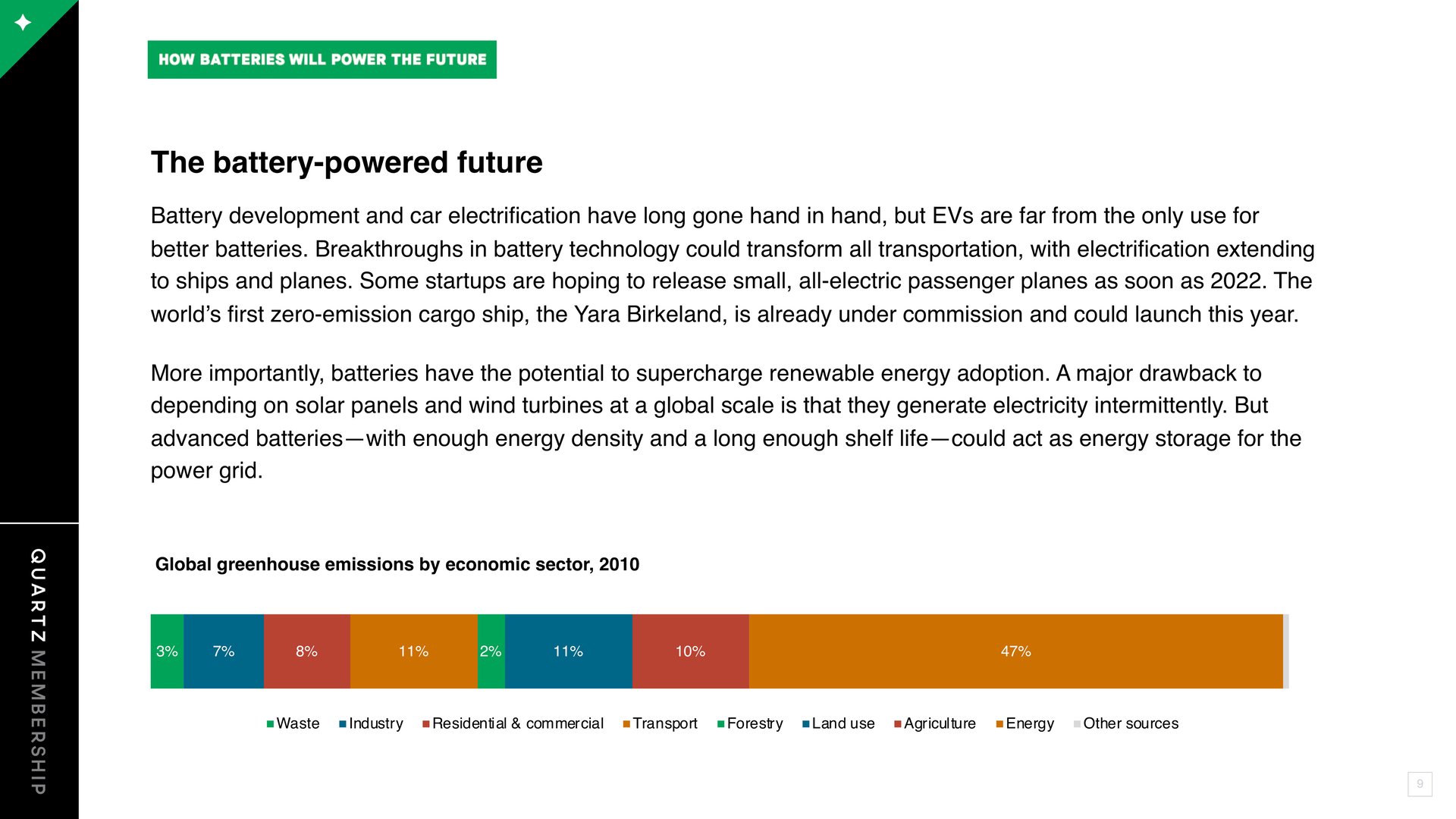How batteries will power the future
Batteries are on track to overtake fossil fuels as the primary way we power the world. The industry’s four giants—Panasonic, CATL, BYD, and LG Chem—bring in a combined $100 billion in annual revenue, and RMI reports that the first half of 2019 saw $1.4 billion in battery technology investment. But if batteries are going to power the future, they need to get more advanced, cost-effective, and environmentally-friendly. Fast.


Batteries are on track to overtake fossil fuels as the primary way we power the world. The industry’s four giants—Panasonic, CATL, BYD, and LG Chem—bring in a combined $100 billion in annual revenue, and RMI reports that the first half of 2019 saw $1.4 billion in battery technology investment. But if batteries are going to power the future, they need to get more advanced, cost-effective, and environmentally-friendly. Fast.
Quartz’s latest presentation explains why batteries are key to a greener future and walks you through the challenges that stand in the way of making that promise a reality.

The advent of lithium-ion batteries made the battery revolution possible. First developed in the 1970s, nearly two centuries after the first battery was invented, lithium-ion powers innumerable devices: Smartphones, deep-sea drills, and most electric cars, to name a few. Lithium-ion is revolutionary because it stores far more energy per kilogram and packs more power than batteries that use different chemistry. In terms of electric vehicles, this means a car with a lithium-ion battery will go farther and faster than one powered by nickel metal hydride batteries, for example. Increased demand for lithium-ion batteries has also made them more affordable over time: Since 2010 their price has dropped by nearly 90%.

Consumer battery brands like Duracell and Energizer make up a very small portion of the battery market. Most batteries are sold directly to businesses by the industry’s four giants, all based in East Asia. Two of the four companies racing to unseat Big Oil are headquartered in China, which leads the world in battery production and electric vehicle adoption. Despite the staggering rise of Big Battery, Big Oil is unlikely to lose out entirely in the transition away from fossil fuels. In recent years, Royal Dutch Shell, BP, and Total have all invested millions in renewable energy startups.

Batteries are well on their way to replacing gasoline in ground transportation. Bloomberg New Energy Finance says electric cars will outnumber gas cars in 2038. But the most important role batteries could play in creating a greener future is as energy storage for the power grid. A major drawback of solar and wind power is that they generate electricity intermittently. In theory, batteries could store that energy and distribute it more evenly. But the technology isn’t there yet. Even our most powerful batteries store too little energy for too short a time to replace fossil fuels. And even after decades of innovation and falling battery prices, oil remains the most affordable way to store energy at a global scale.
To see all of the slides, you can view the PDF version or download the PowerPoint file, which includes our sources and notes. This is one of an ongoing series of member-exclusive presentations, which you can read, reformat, and use as you wish.
Please share any feedback about what would make these presentations more useful—or topics you’d like to see us cover—by emailing us at [email protected]. These presentations are an exclusive benefit for Quartz members. We’d love it if you’d encourage any friends or colleagues who express interest to become a member so they can access them too.